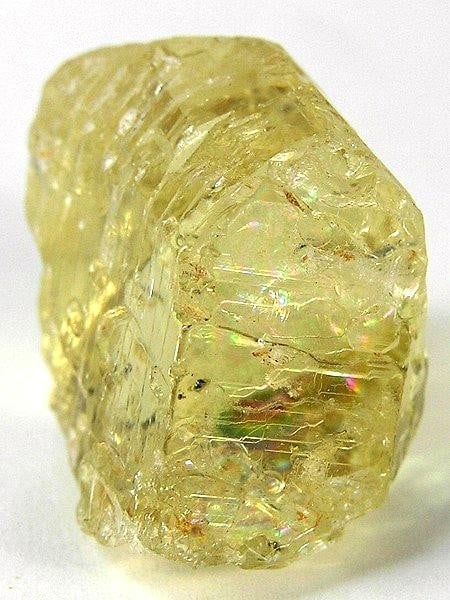Sanidine Value, Price, and Jewelry Information
Sanidine is a mineral of volcanic rocks, rarely considered a gem. While occasionally brown or yellow, most examples are colorless.
Start an IGS Membership today
for full access to our price guide (updated monthly).Sanidine Value
Comments
Sanidine is a mineral of volcanic rocks, with little gem significance. It is uncommon and rarely seen as a gem. While occasionally brown or yellow, most examples are colorless. While the properties are closer to microcline, it is usually classed as a plagioclase.
Name
Sanidine is also from the Greek, sanis, meaning board, in reference to the tabular crystals. Anorthoclase is from Greek words for not upright because the cleavage is not 90°.
Occurrence
- A component of acid igneous rocks. Oregon; California.
- Near Koblenz, Germany: brown transparent gems; S.G. 2.57-2.58; birefringence 0.007; indices: 1.516-1.520/ 1.520-1.525/1.522-1.526.
- Ashton, Idaho: sanidine crystals in volcanic luff, up to 1 cm, colorless, well formed. Indices: 1.516-1.519/ 1.520-1.522/1.521-1.523; 2V=8-19°; birefringence 0.003-0.005.
Stone Sizes
Sanidine is not a common mineral and is hardly ever seen as a gemstone. Crystals tend to be colorless and nondescript and are rare in cuttable sizes.
Joel E. Arem, Ph.D., FGA
Dr. Joel E. Arem has more than 60 years of experience in the world of gems and minerals. After obtaining his Ph.D. in Mineralogy from Harvard University, he has published numerous books that are still among the most widely used references and guidebooks on crystals, gems and minerals in the world.
Co-founder and President of numerous organizations, Dr. Arem has enjoyed a lifelong career in mineralogy and gemology. He has been a Smithsonian scientist and Curator, a consultant to many well-known companies and institutions, and a prolific author and speaker. Although his main activities have been as a gem cutter and dealer, his focus has always been education. joelarem.com
Related Articles
Black Diamond Value, Price, and Jewelry Information
Chameleon Diamond Value, Price, and Jewelry Information
Gray Diamond Value, Price, and Jewelry Information
Green Diamond Value, Price, and Jewelry Information
Latest Articles
Quartz Toxicity: Understanding the Risks for Jewelers and Wearers
Synthetic Amethyst: What is it and How is it Made?
Hambergite Value, Price, and Jewelry Information
Pearl Simulants: How to Spot Faux Pearls
Never Stop Learning
When you join the IGS community, you get trusted diamond & gemstone information when you need it.
Get Gemology Insights
Get started with the International Gem Society’s free guide to gemstone identification. Join our weekly newsletter & get a free copy of the Gem ID Checklist!
